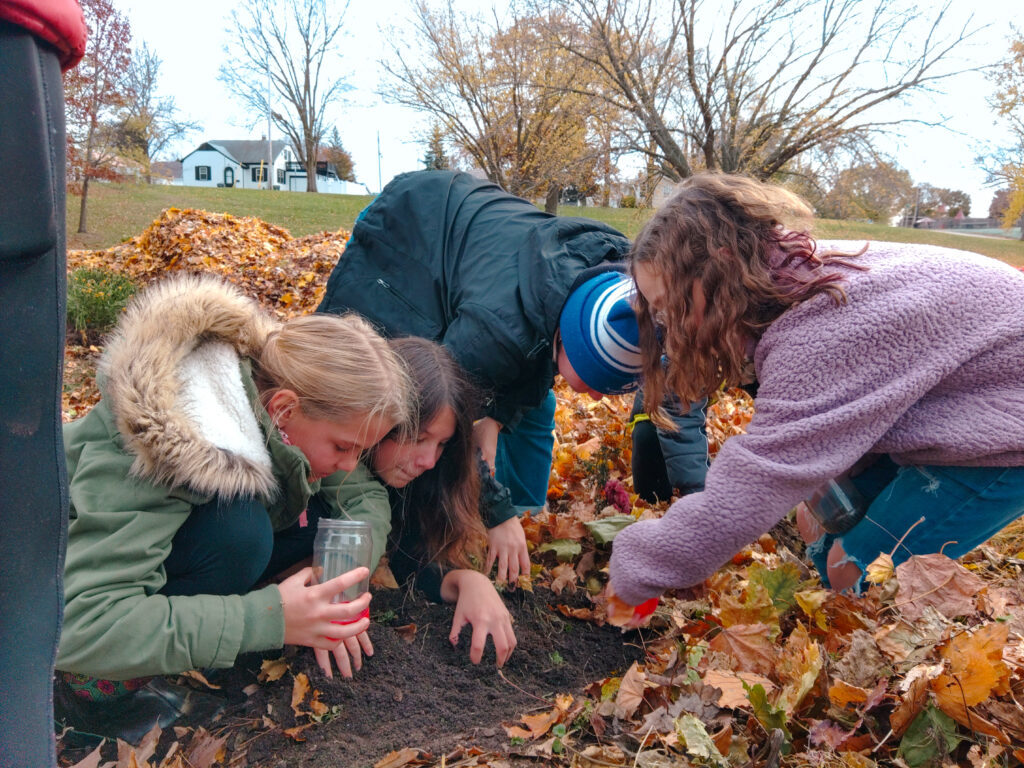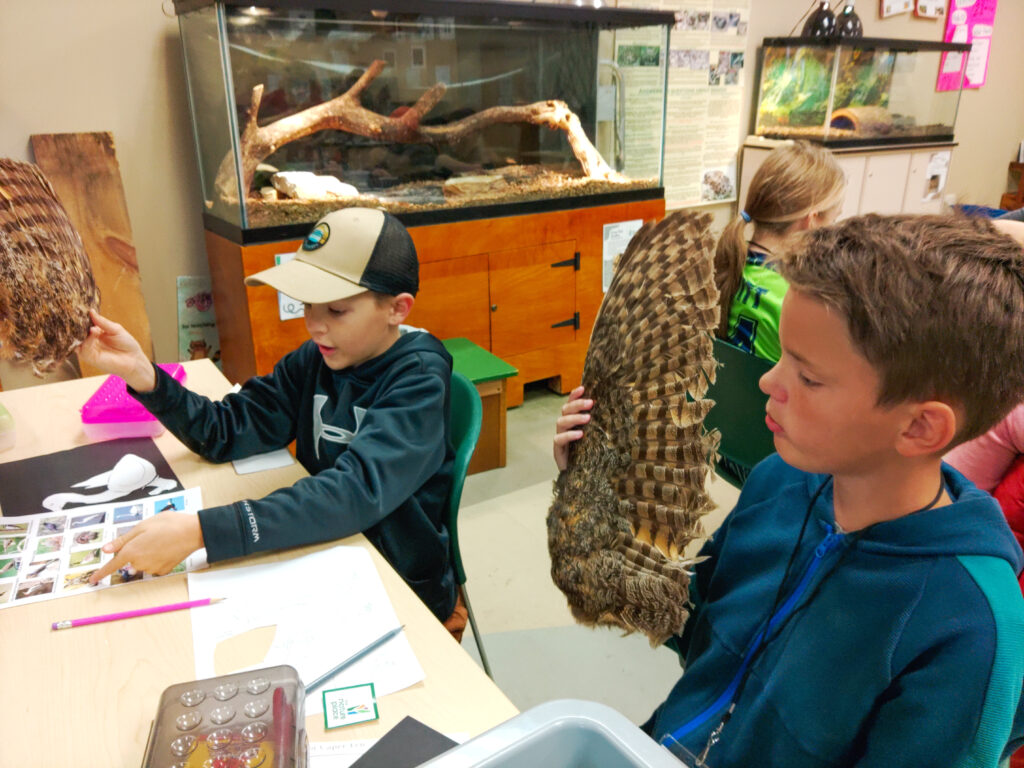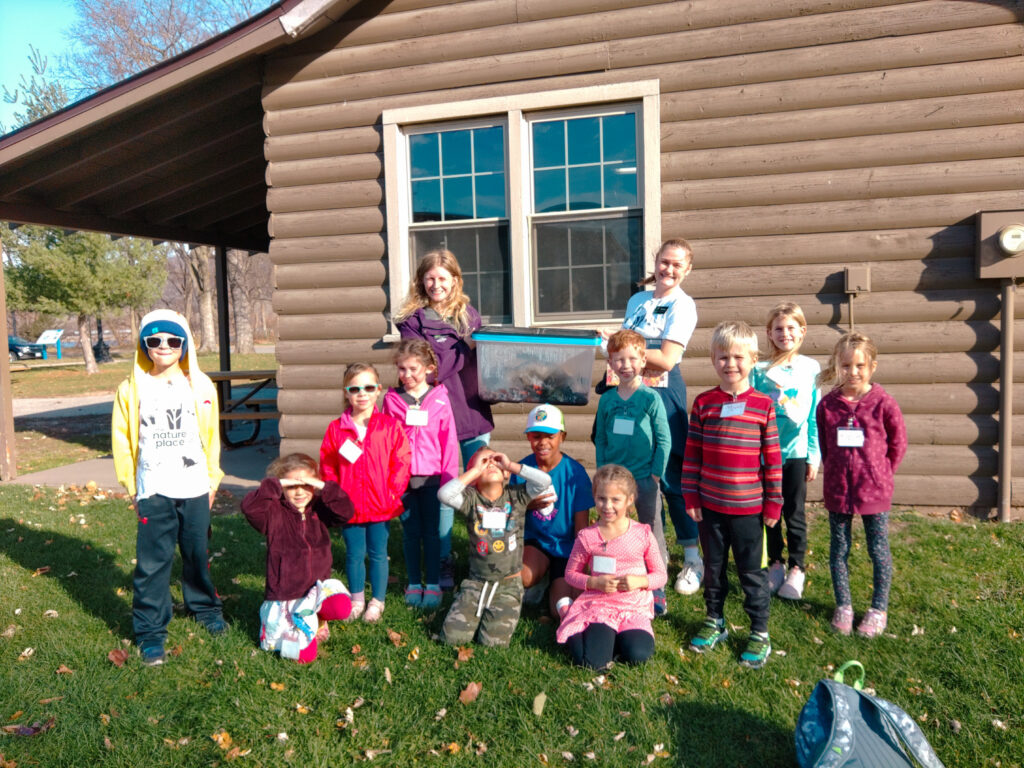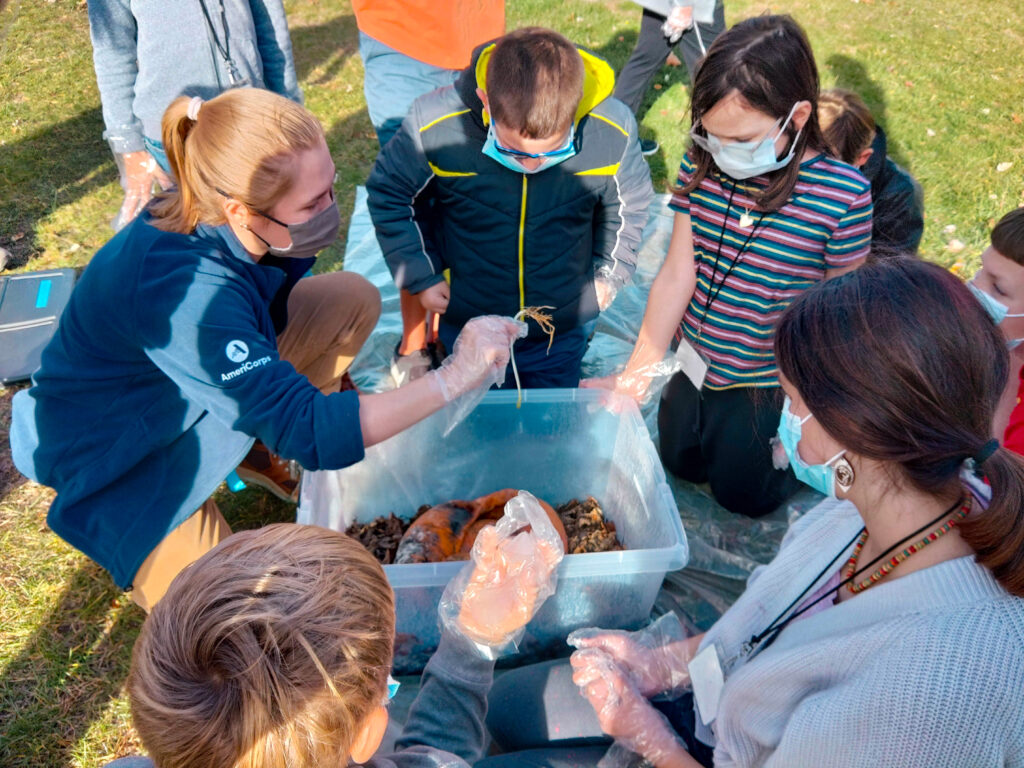By Emma Lather | Environmental Educator
AmeriCorps Member, September 2023 – August 2024
My interest in an environmental career started with a live sand dollar prickling my hand during a homeschool field trip when I was 8 years old. As a former homeschool kid turned Environmental Educator, I treasure the opportunity to work with local homeschoolers through our very own Homeschool Science Series here at The Nature Place. In our program, we spend as much time as possible out in nature emphasizing hands-on learning and discovery, whether that’s looking for fungi down the Wood Duck Trail or digging for creepy crawlies in the city leaf pile.

When planning our lessons, we always consider how we can create opportunities for our students that are hard to replicate in a home learning environment, such as playing group games and incorporating specialized resources. We used our bodies to model water molecules in motion during our winter Physical Science series. During a fall Life Science lesson, we used our binoculars, wooden cutouts, and collection of animal pieces and parts to study animal diversity through the lens of Wisconsin native bird species. I even had a special request from a returning student to replay the hit game “Migration Headaches”, in which geese (students) compete for food resources (poker chips) and wetland habitat (carpet squares) while running from hunters (students currently “dead”).

We ran our Homeschool Science series for the first time in the fall of 2023, encouraged by a homeschool parent in the area. In response to the enthusiastic interest in our program from other members of the homeschool community, we plan to run three series per year focusing on Life, Physical, and Earth Sciences. Each series runs over four weeks, exploring science topics with 9-12 year olds on Tuesdays and 5-8 year olds on Thursdays.

As with all our programs, I dream of Homeschool Science students experiencing magical moments of connection with nature that foster an ongoing interest in science and the environment. It might not start with a sand dollar – the La Crosse River Marsh is a pretty different wetland than the estuaries of my own homeschool years – but maybe it starts with Lewis Jr., the sprouted seed from our decomposing pumpkin project, who students asked about by name when they returned for our winter series.


